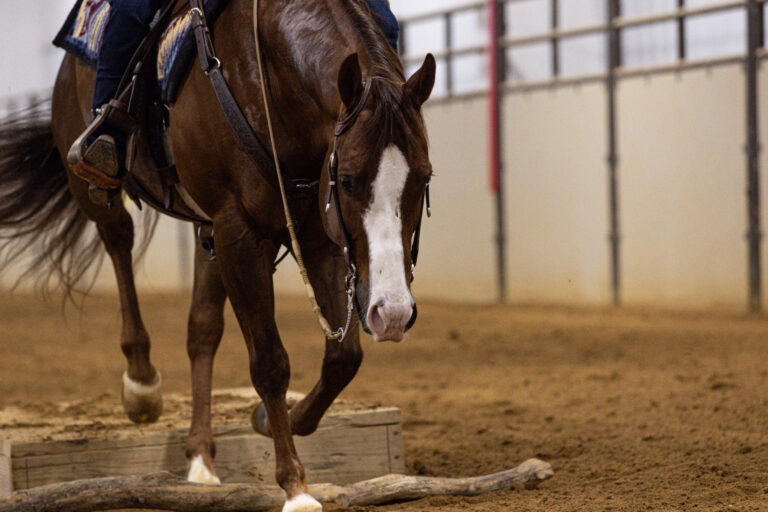This article is part of our Joint and Hoof Health Awareness Month brought to you by Cosequin Joint Health Supplements.

Healthy feet come with daily care. And while having hoof health is important in every aspect of horse ownership, having a horse with healthy feet will allow you to spend all day on the trail and tackle any terrain that comes your way.
Daily Maintenance

Photo by terricage/stock.adobe.com
Each time you’re with your horse, pick up his feet, clean them, and check that they’re in good condition. Remove rocks, and watch for hoof-wall cracks.
This helps ensure that your trail horse’s hooves are ready to withstand the stressors of the trail, be they sharp rocks, pebbles, slate, water, sand, or hard ground. If his hooves can’t handle the conditions, you’ll be calling it a day too early in your ride because of soreness or injury. Best-case scenario, your horse will just be uncomfortable.
Daily supplementation is another thing you can do to support healthy hoof growth and strengthen his feet. A supplement in the form of a pellet is an easy way to help your horse get the vitamins and amino acids he needs to support his feet. (Tip: If you plan on heading out for an overnight ride pre-make your bags of grain and include his supplements in them.)
Cosequin ASU Joint and Hoof Pellets is a great solution as it has biotin in it to support the quality and growth of hooves in horses; methionine and lysine for protein production to support hoof integrity; and copper and zinc which supports hoof strength and durability.

Photo by toninewphotography/stock.adobe.com
Protect His Feet
A simple rule: If hoof wear exceeds hoof growth, then you must substitute that growth. Horseshoes and hoof boots fulfill this role.
Have your horse trimmed every six to eight weeks by a reputable professional farrier. Shoe consistently during peak riding season. Your horse’s hoof shape should complement his anatomy and consider his foot’s growth pattern. A good farrier will shape the shoe to your horse’s hoof, not the other way around.
If you choose for your horse to go barefoot, use hoof boots when you ride on terrain that wears on feet. If your horse goes barefoot only during the off season, hoof boots protect his hooves while giving them a rest from shoes and allowing regrowth.
Correctly fit and adjust hoof boots so your horse can achieve full pastern flexion. His foot contains veins and arteries that pump blood to and from his leg. If you restrict pastern flexion, you restrict blood flow elsewhere.
Do tightly secure the boots. Your horse can’t feel the outside of his hoof wall, so don’t be shy about cinching down the bootstraps. But avoid tightening too much near the coronary band, as this shuts off blood supply to the rest of his leg.
Test the boots before you get to the trailhead to ensure that they fit well. Boots are easily sucked off by mud, and a loose boot is even likelier to come off.
One Step at a Time
Your trail horse is at risk for a foot injury even on rock-free trails, so be prepared. You’d hate to have to end the ride because your horse fractures his hoof wall, is bleeding, or has a stone bruise, and you’re ill-prepared to handle it.
Carry supplies for hoof-related mishaps. Having a small rasp and an extra set of boots can help you if you find yourself with a foot injury on a ride. It’s not practical to bring an entire set for each horse, but you shouldn’t be without a few spares.
If you find yourself without hoof protection, stay on the softest ground possible, and avoid rocks as you head back, even if it means you dismount and walk. A few chips aren’t a big deal, but if you badly break up the hoof wall or give your horse a stone bruise, he can be out for months.






